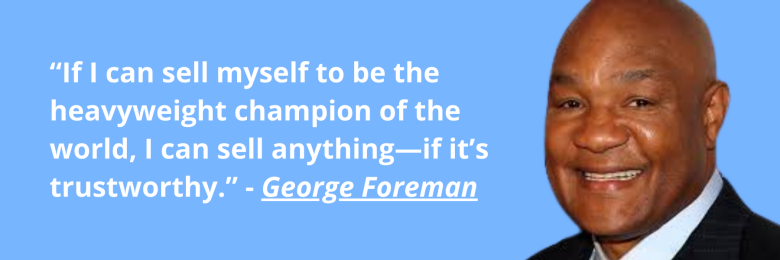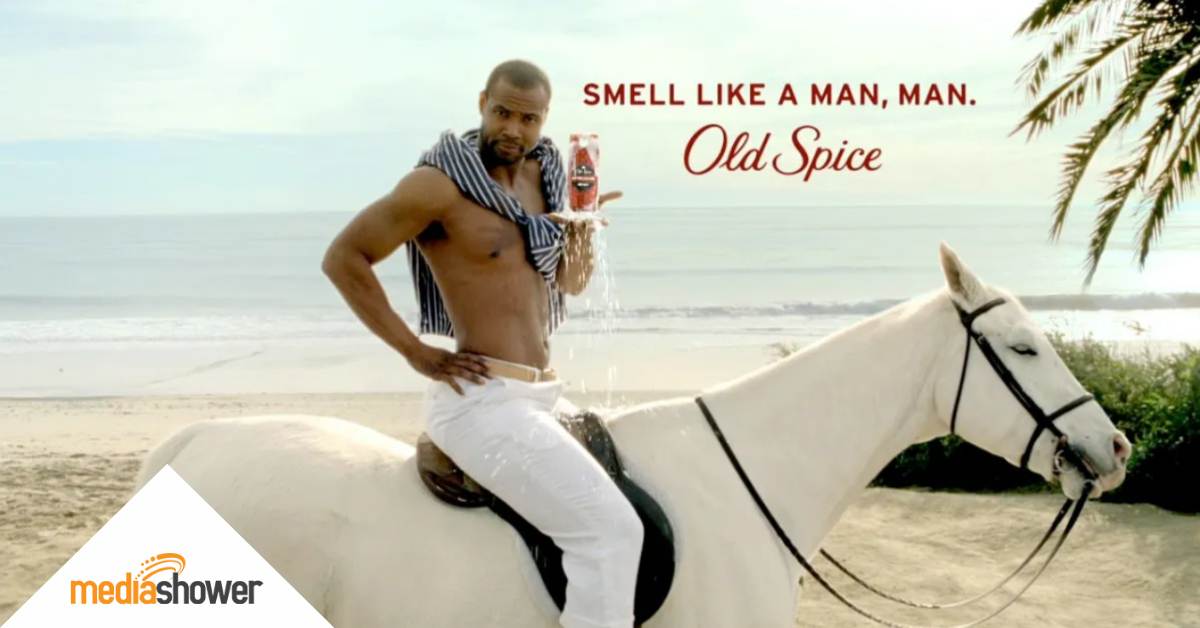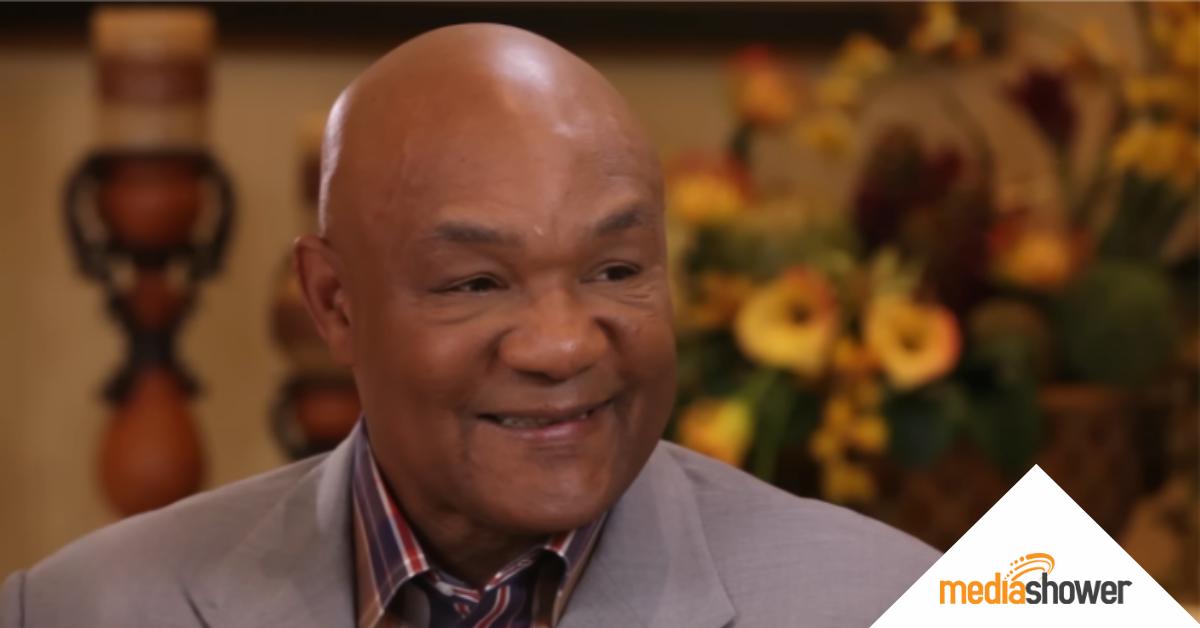
Quick Summary
- The heavyweight champ of branding. George Foreman turned his post-boxing life into a case study in marketing brilliance, building one of the most successful personal brands of all time.
- More than just a grill. From late-night infomercials to sitcoms, talk shows, and speaking engagements, Foreman became a trusted voice across multiple platforms.
- Endorsement legend. His authentic, approachable persona helped sell over 100 million grills—and paved the way for a decades-long career as America’s favorite pitchman.
George Foreman was a heavyweight champion in the boxing ring—but his greatest legacy might be the brand he built outside of it.
With charisma, credibility, and a sharp business instinct, Foreman built one of the most successful personal brands in history. His name moved products, his smile made people listen, and his story gave everything he sold a little more heart.
He showed up in infomercials, sitcoms, talk shows, commercials, and church pulpits. He launched products, mentored youth, and delivered speeches from Texas to Oxford.
Wherever he went, people believed him—and that belief powered a brand that reached homes around the world.
As we say goodbye to Big George, we’re honoring the marketing legacy that made him a household name long after the final bell.
The George Foreman Origin Story
George Foreman etched his name in boxing history by winning an Olympic gold medal, becoming Heavyweight Champion of the World in 1973, facing Muhammad Ali in the Rumble in the Jungle, and making a stunning comeback in his 40s.
His second act in the ring was impressive—but the act that came after defied every expectation.
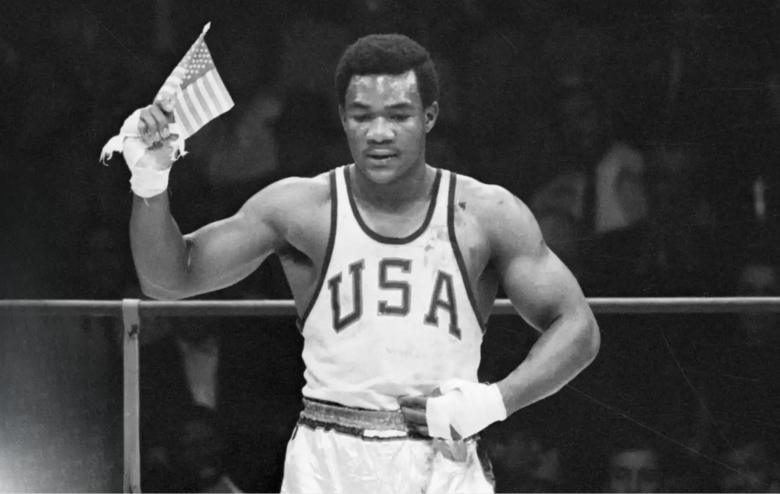
Foreman wins Olympic gold, 1968.
Building a brand
When most people think of George Foreman, they remember the knockout punches. But marketers remember the knockout product: George Foreman’s Lean, Mean, Fat-Reducing Grilling Machine.
However, by the time the product now more commonly known as the George Foreman Grill launched in 1994, Foreman had already built a reputation far beyond boxing.
He was a favorite on game shows like “The Hollywood Squares.” He made appearances on popular talk shows like “The Mike Douglas Show,” “David Letterman,” and “The Tonight Show.”
In 1990, he made a guest appearance on “Night Court.” Two years later, he starred in a playful Doritos ad with his sons (all famously named George), claiming that “IV out of V George Foremans prefer the taste of new Doritos.”
It was strange, self-aware, and unforgettable—exactly the kind of ad that sticks.
1992 Doritos commercial.
When Foreman turned up in an infomercial pitching a fat-reducing grill, America had gotten used to seeing “Big George” outside the ring. They liked George’s pivot from ferocious competitor to a more approachable personality—and a marketing legend was born.
Campaign Overview
In 1994, Salton, Inc. was looking for a face to launch its new indoor grill. Foreman, already a proven pitchman for brands like McDonald’s and Meineke, saw an opportunity.
This time, he wanted more than an endorsement—he wanted ownership.
The result was The George Foreman Lean Mean Fat-Reducing Grilling Machine, a compact, angled countertop grill that drained away grease while cooking.
Salton had the product. George had the pitch.
He believed in the grill, used it himself, and delivered each line like he was talking to a neighbor. His signature phrase—“It’s so good, I put my name on it”—became a marketing classic.
Infomercials ran nonstop. George kept showing up on QVC and late-night TV, grinning, flipping burgers, and building an audience that felt like friends.
Key Success Factors
In a word: George
Foreman didn’t sell the grill like a spokesman. He talked about it like a guy who genuinely liked what he was using. People believed him.
A built-in fanbase
Boxing fans already knew his story. His retail success felt like a continuation of that comeback. It added authenticity to everything he pitched.
Infomercial dominance
Before social media, infomercials were king—and George ruled that medium. His charm turned 2 a.m. product demos into appointment television.
Cultural alignment
Low-fat products were flying off store shelves. SnackWell’s, margarine, and “lite” everything ruled the grocery aisles.
At the same time, home fitness was exploding. VHS workouts from Jane Fonda and Richard Simmons were helping people exercise without leaving the house. Gym memberships surged, but so did the desire for practical at-home health solutions.
The George Foreman Grill offered exactly what the culture wanted: a healthier way to cook, with none of the hassle. It felt modern, responsible, and totally doable.
George tells a hilarious story about the George Foreman Grill.
Innovative Elements
Person-first branding
Foreman’s brand began with his personality. Instead of relying on catchphrases or gimmicks, he showed up as himself. That presence gave every product a human touch and made audiences feel like they were buying from someone they knew.
Product alignment
Everything he endorsed made sense for his image. From kitchen gear to personal grooming tools, his products felt like natural extensions of who he was—reliable, practical, and easy to like.
Smart dealmaking
Instead of settling for a flat fee, Foreman structured deals that paid out over time. The grill’s royalty model turned into a financial powerhouse, earning him hundreds of millions and setting the gold standard for celebrity licensing.
Platform consistency
Whether a late-night infomercial or a talk-show interview, Foreman came across the same way: genuine, funny, and steady. That consistency built a sense of trust that lasted for decades.
Cultural timing
Foreman tapped into health trends right as they were cresting. The grill aligned with the low-fat movement, and his broader product line matched the era’s appetite for affordable, at-home solutions.
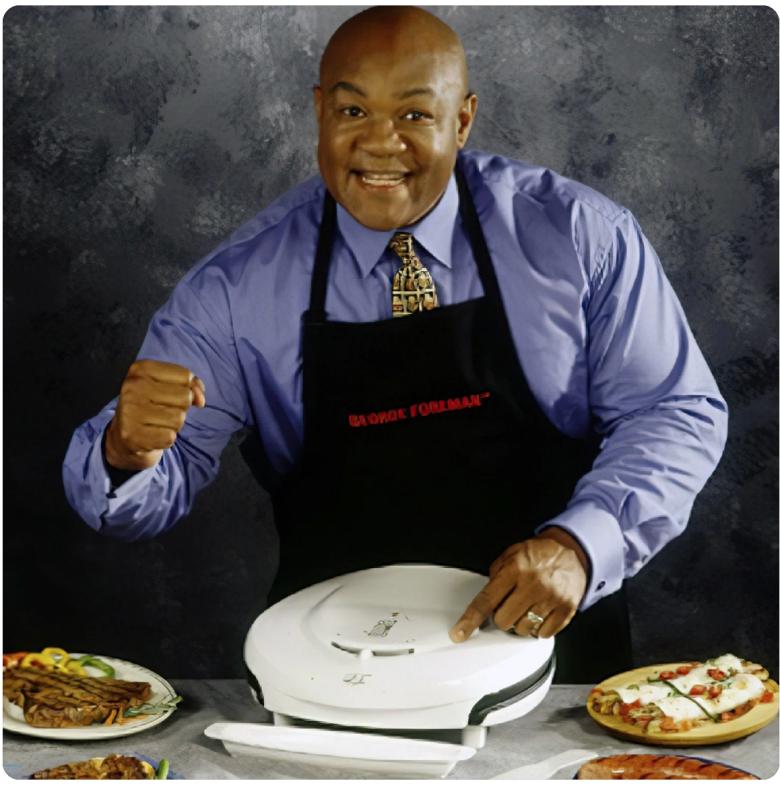
Impact and Results
Over 100 million grills sold
The product became one of the most successful kitchen appliances in history, proving the power of a personality-driven brand.
$200 million earned
His revenue from the grill eclipsed even his boxing career, making him one of the highest-earning athlete endorsers of all time.
Product longevity
The George Foreman Grill remains in production and widely recognized decades later. It’s still a staple in kitchens across the globe, with new models continuing to carry his name and legacy.
A case study in branding
Foreman’s brand partnership with Salton is now studied in business schools. Marketers point to it as a textbook example of how authenticity, timing, and smart deal-making can turn a simple product into a global phenomenon.
His own ABC sitcom
The short-lived comedy “George” featured him mentoring at-risk youth and marked his full arrival as a pop culture icon—not just a pitchman, but a personality big enough to carry a show.
Talk-show favorite
George became a favorite talk-show guest, appearing on shows that included “Larry King Now” and “Late Night with Conan O’Brien.”
Laughing with Conan in 2002.
Post-grill pitchman
The success of the George Foreman Grill led to an extended career as a lovable pitchman. Foreman kept showing up in commercials—for products like home warranty services, health-related gadgets, and kitchen appliances outside his own brand.
His friendly, trustworthy image made him a go-to spokesperson for everyday products aimed at older adults, families, and homeowners. Big George never really stepped away from the camera.
Mentor and inspirational speaker
Foreman eventually became an ordained Christian minister and youth mentor. He used his incredible journey from extreme poverty to successful athlete and businessman to inspire others to improve their lives.
An excellent example is this 2016 address to the Oxford Union at Oxford University.
Big George’s legacy will live on.
Marketer Takeaways
- Start with the story. Foreman’s life journey—from heavyweight champ to minister to branding icon—created the foundation for authentic, long-term marketing success.
- Build trust over time. His consistency across roles and platforms made audiences feel like they knew him, which made them more likely to buy.
- Choose products that reflect your persona. Whether it was a grill, a blender, or a steam cleaner, the products Foreman endorsed felt aligned with the man himself.
- Stay in the spotlight, the right way. Foreman didn’t just pop in for one campaign—he showed up, over and over, with the same warmth and credibility each time.
- Use the right platform. Foreman’s post-boxing success came from using infomercials in their prime.
Media Shower’s AI marketing platform helps brands cook up campaigns that sizzle. Click here for a free trial.
